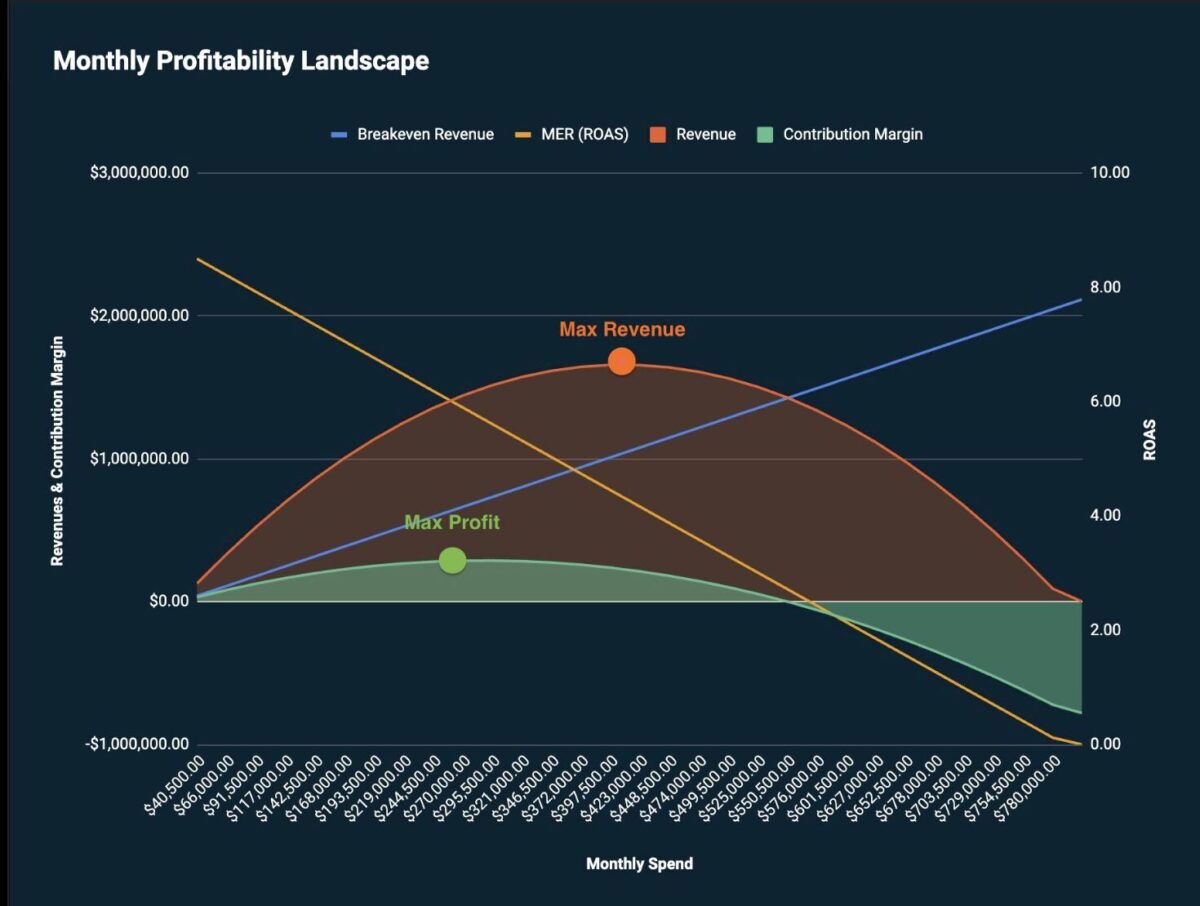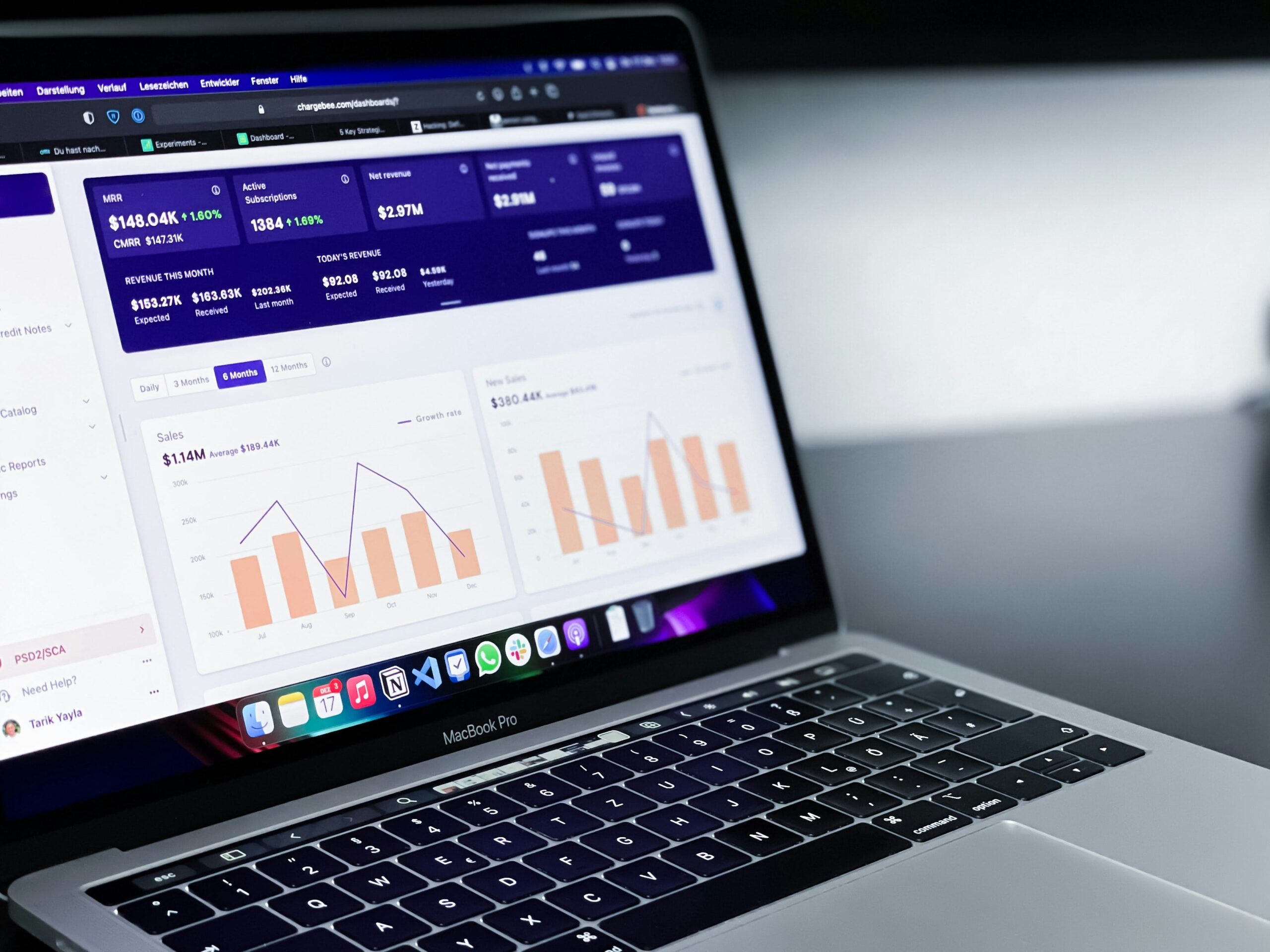Every business wants to increase revenue while maximizing their bottom line. In digital marketing, achieving both simultaneously presents a significant challenge. At some point, every channel has a breaking point where additional ad spend delivers diminishing returns. The key to maximizing efficiency is understanding exactly where that point lies.
This concept is at the heart of a marketing framework outlined in a recent LinkedIn post by Peter Quadrel, a growth strategist specializing in performance marketing. His analysis, backed by seasonally adjusted regression models, helps brands identify the perfect spend—the amount that maximizes either revenue or profit before performance declines.

Photo Credit: Peter Quadrel
Breaking the Myth: Marketing Channels Have Ceilings
One of the most common misconceptions in digital advertising is that you can scale a channel indefinitely. Many assume that if an ad campaign is performing well, increasing the budget will simply increase returns proportionally. Unfortunately, that’s not how it works.Each marketing channel has a saturation point, meaning there is only so much high-quality traffic available within a given audience. Once you reach that point, any additional spend produces incrementally smaller returns. Worse, it can drive costs up, leading to lower profitability.
The Data-Driven Approach to Smart Scaling
To avoid over- or under-spending, businesses must first establish clear goals—whether that’s maximizing revenue, profit, or market penetration. From there, the process involves:
- Running Pilot Campaigns – Start with controlled budgets to test audience engagement, cost-per-acquisition (CPA), and return on ad spend (ROAS).
- Incremental Budget Increases – Rather than doubling ad spend overnight, increase it gradually while tracking performance metrics.
- Monitoring KPIs Closely – Watch for signals that a channel is reaching its ceiling, such as a sudden rise in CPA or a drop in conversion rates.
- Identifying the Breaking Point – The moment additional spend results in disproportionate costs, it’s time to reassess or shift budgets to alternative strategies.
Quadrel’s model, which visualizes revenue, profit, and efficiency metrics, provides a clear roadmap for brands to make data-driven budget decisions.
Revenue vs. Profit: The Trade-Off Businesses Must Navigate
A crucial decision point in any media-buying strategy is whether the goal is to increase revenue at all costs or to maximize profitability. Many companies attempt to do both, but these objectives are inherently at odds.
- Maximizing revenue often means accepting lower margins and potentially higher acquisition costs.
- Maximizing profit may require limiting spend to only the most efficient conversions, capping growth potential.
Savvy marketers acknowledge this trade-off and adjust strategies based on company objectives. If a business is in aggressive growth mode, it may tolerate less efficient spending to gain market share. Conversely, a company focusing on profitability will need to be disciplined in scaling efforts.
The Future of Budget Optimization in a Changing Digital Landscape
With evolving advertising platforms and increasing competition, optimizing spend isn’t just about knowing when to scale—it’s about where to invest. As consumer behaviors shift, businesses must continuously refine their approach to ensure ad dollars are working efficiently.
Consider ABC Co., a growing e-commerce brand that starts by advertising on Facebook. Initially, their ad spend yields strong results—customer acquisition costs (CAC) remain low, and revenue steadily increases. Encouraged by this success, they double their budget. However, they soon notice their CAC rising while conversions stay flat. They’ve hit a ceiling—Facebook has delivered all the low-hanging fruit in their audience, and additional spend no longer generates the same return.
At this point, ABC Co. must decide: keep increasing spend and accept diminishing returns, or shift some of their budget to a new channel, like pay-per-click (PPC) advertising on Google? By gradually reallocating their budget, they test new audiences and ad formats, ensuring they maintain efficiency while continuing to grow.
As data suggests, finding the perfect spend isn’t a one-time decision—it’s an ongoing process of testing, learning, and adjusting. The brands that master this approach see 40-200% improvements in marketing efficiency.For businesses navigating the complexities of digital advertising, understanding when to push and when to pull back on spending can be the difference between sustained growth and wasted budgets. By adopting a data-first approach and recognizing the inevitable ceilings within marketing channels, companies can ensure that every dollar spent is working as hard as possible.



